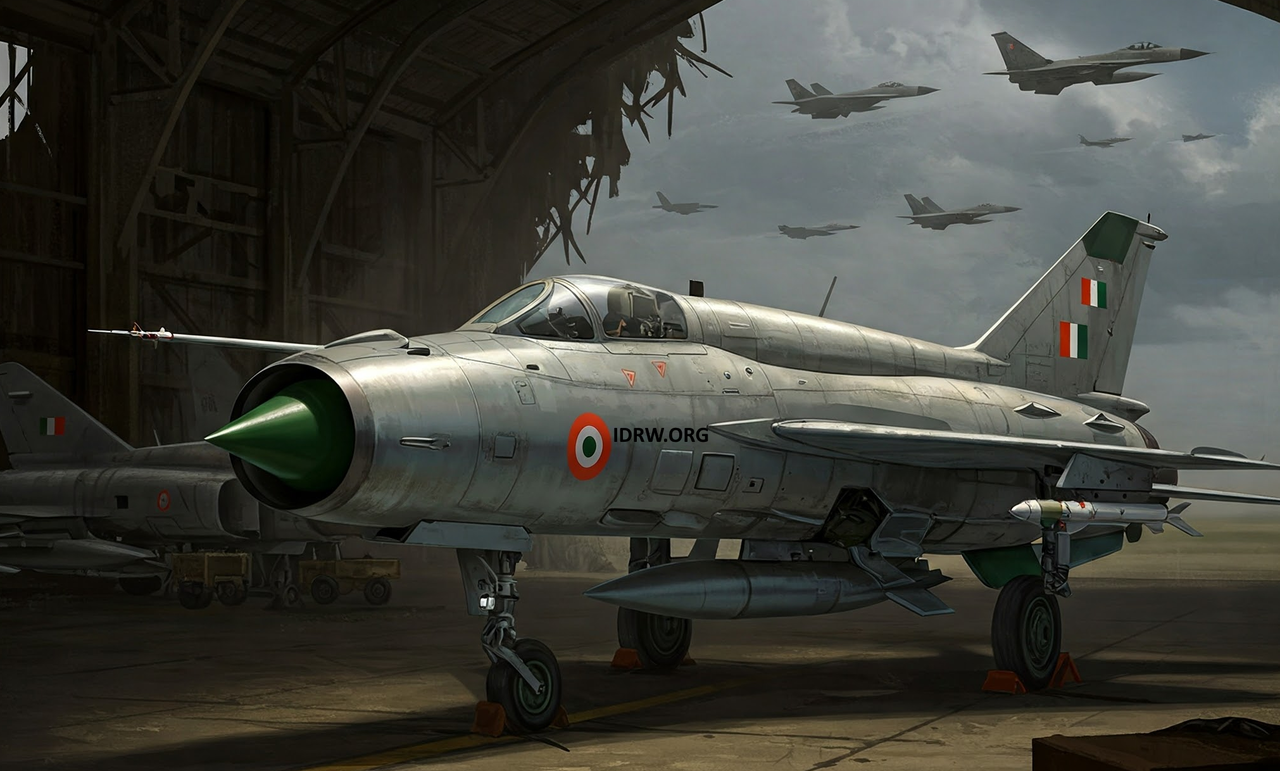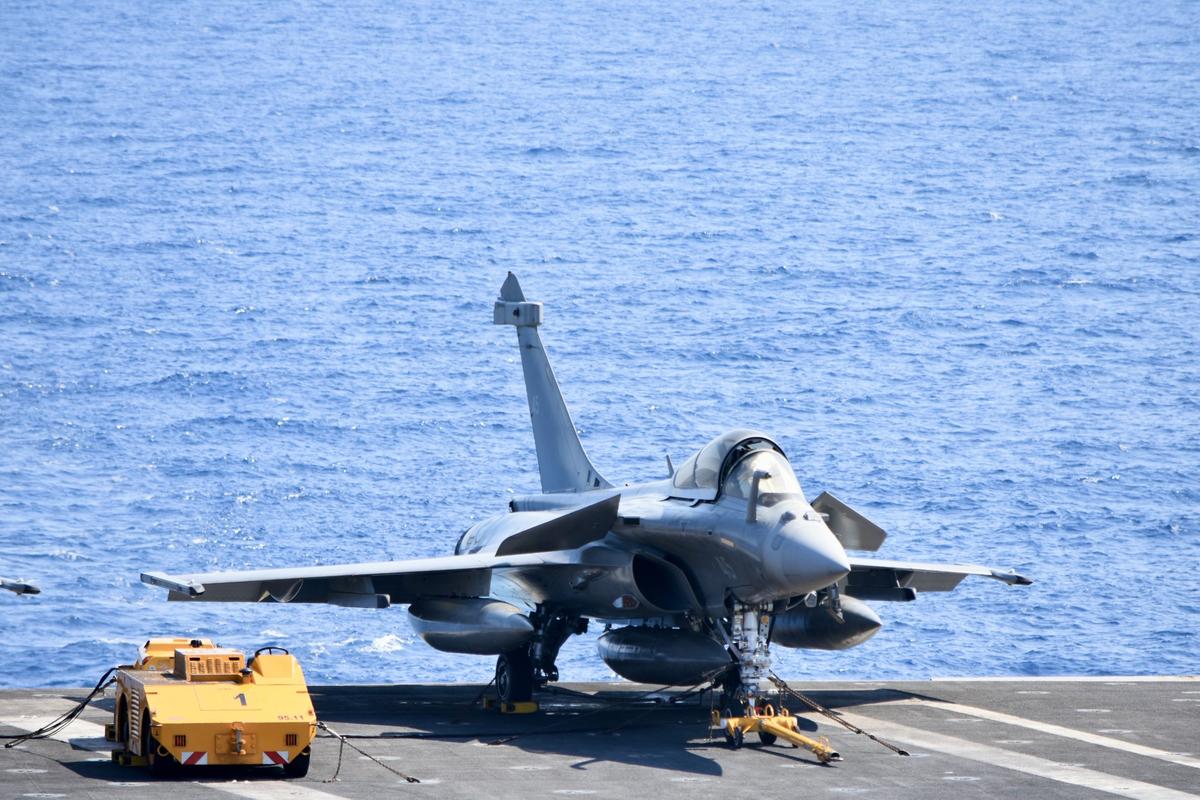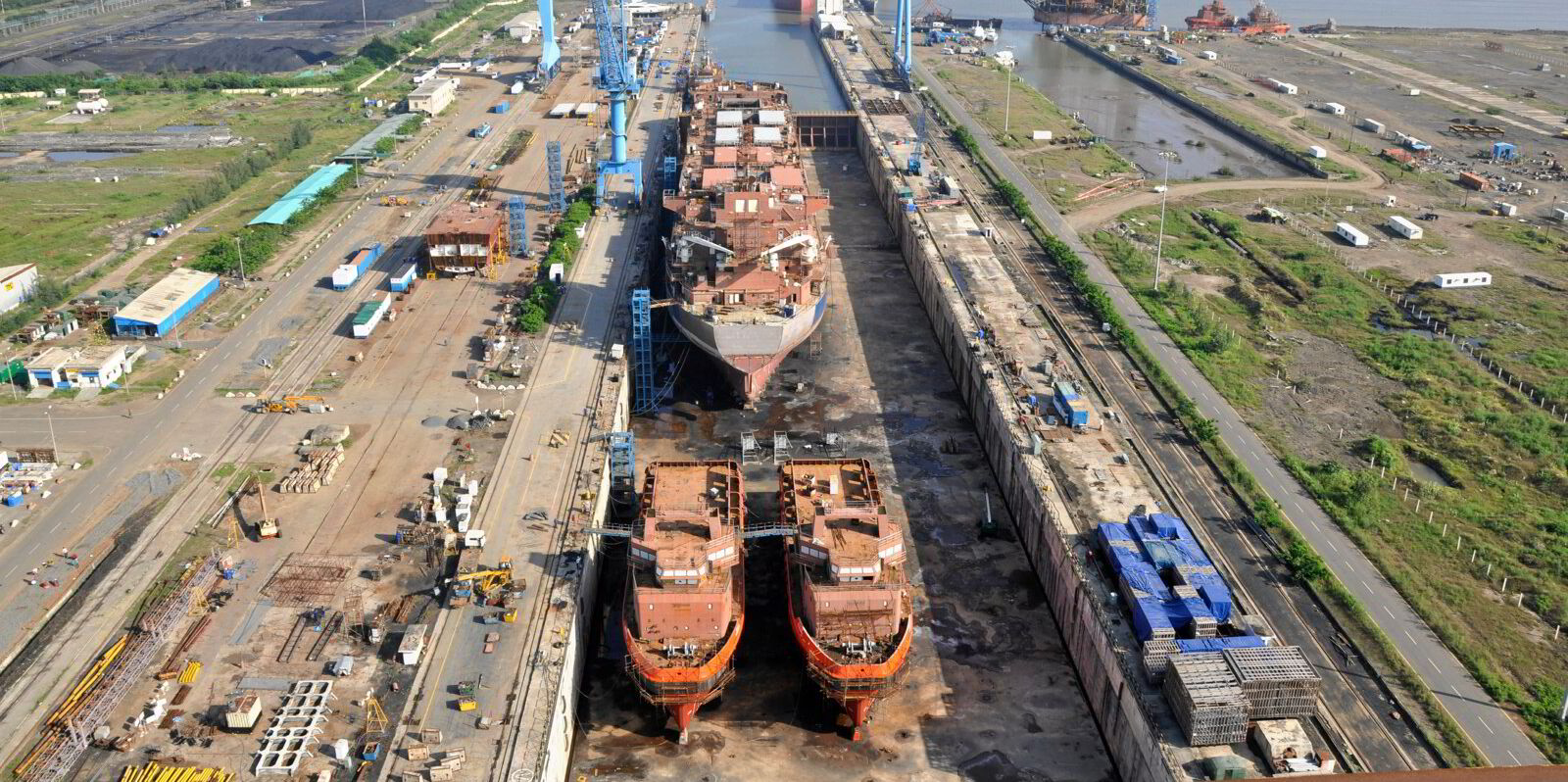AFI
SOURCE: AFI


In a candid interaction with Indian media, Tim Davis, a former Royal Air Force (RAF) instructor, offered a detailed assessment of the SEPECAT Jaguar aircraft, a platform still in service with the Indian Air Force (IAF) but long retired by other nations. Davis, who spent decades training pilots, including many from India, underscored both the strengths and limitations of the aircraft, while making a strong case for its retirement.
Reflecting on the Jaguar’s role in the RAF, Davis noted that the UK operated the aircraft for 34 years, primarily as a low-level strike attack platform. “We did a lot with that aircraft,” he said. “It was used in a similar way to how India uses it today.” However, Davis acknowledged that by the late 1990s and early 2000s, the aircraft had begun to show its age. More advanced platforms like the Tornado GR4 and later the Eurofighter Typhoon began to eclipse the Jaguar in terms of performance, range, payload, and avionics.
Continue readingSOURCE: AFI


The Indian Air Force (IAF) is grappling with a crisis of unprecedented proportions, one that threatens its ability to safeguard the nation against growing threats from China and Pakistan. In a recent interview on The Wire with host Karan Thapar, Shashank Singh—a leading defense analyst, consultant at Caravan magazine, and lecturer at Yale University—laid bare the gravity of the situation. Drawing from his detailed exposé in Caravan, Singh highlighted a multi-faceted emergency: dwindling squadron strength, outdated aircraft, a lack of critical force multipliers, personnel shortages, and systemic policy failures. His stark warning—“the crisis is very, very serious”—underscores a national security challenge that demands urgent action.
At the heart of the crisis is the IAF’s depleted squadron strength. The IAF is sanctioned for 42 squadrons but currently operates only 31—a 26% shortfall. Singh pointed out that as far back as 2016, defense expert Ashley Tellis assessed that the IAF needs 60 squadrons to effectively counter a two-front threat from China and Pakistan. Yet, the numbers have only dwindled. Two of the 31 squadrons are equipped with MiG-21s, aircraft so outdated that Singh notes they are “just being kept to make up the numbers.” Similarly, the IAF’s Jaguar fleet—long retired by other air forces like the RAF—lacks spare parts, rendering it increasingly obsolete.
Continue readingSOURCE: AFI


Sameer Joshi, CEO of NewSpace Research and Technologies (NRT), took to X this week to spotlight a pressing challenge facing India’s aerospace and defense sector. In a pointed post tagging Union Commerce Minister Piyush Goyal, Joshi celebrated NRT’s strides in delivering deep tech and innovation but lamented the lack of patient capital for companies like his. “VCs love the food delivery guys, yes. GFR and L1 in #DeepTech also hurts…,” he wrote, urging Goyal to take note. As India aims to cement its place in the global aerospace race, Joshi’s words underscore a broader tension: the struggle of deep tech innovators to secure the long-term funding needed to soar.
NewSpace Research and Technologies, a Bengaluru-based firm founded in 2017 by Joshi and Julius Amrit, has been a trailblazer in India’s aerospace and defense landscape. The company focuses on next-generation unmanned systems, developing persistent drones for earth observation and communications that operate at altitudes of 5 to 20 km with endurance ranging from days to months. NRT’s High Altitude Pseudo Satellite (HAPS) UAV, boasting a 3+ month endurance, positions it among a handful of global competitors in cutting-edge aerospace tech. Recent achievements include a solar-powered UAV that flew continuously for 21 hours—a first for India—and setting a global record for the highest altitude flight in a multirotor system.
Continue readingSOURCE: AFI


Since Russia’s invasion of Ukraine in February 2022, the conflict has been as much a war of information as it has been a war of weapons. Ukraine, with the support of Western media, has crafted a narrative of defiance and heroism that often borders on the absurd, blending tales of improbable battlefield feats with exaggerated claims of Russian desperation.
Stories like a Ukrainian pensioner shooting down a £74 million Russian Su-34 jet with a rifle, a woman downing a drone with a jar of tomatoes, Russian reservists fighting with shovels, and Moscow resorting to using dishwasher chips in tanks have captured global attention. While these narratives have bolstered Ukraine’s morale and international support, they also raise questions about the role of Western media in amplifying propaganda that stretches the limits of credibility.
Continue readingSOURCE: AFI


In a landmark decision to strengthen the Indian Navy’s maritime strike capabilities, the Cabinet Committee on Security (CCS), chaired by Prime Minister Narendra Modi, has approved a ?63,000 crore government-to-government deal with France to procure 26 Rafale Marine (Rafale-M) fighter jets from Dassault Aviation. The contract, cleared on April 8, 2025, marks India’s largest-ever fighter jet acquisition and is set to enhance the Navy’s operational prowess in the Indian Ocean Region (IOR), particularly amid growing Chinese naval activity. However, the deal also raises questions about India’s long-term self-reliance goals and the strategic implications of continued reliance on foreign defense imports.
The contract includes 22 single-seater Rafale-M jets and four twin-seater trainer variants, designed specifically for carrier-based operations. These jets will be deployed on India’s indigenous aircraft carrier, INS Vikrant, and will complement the Navy’s existing fleet of Russian-origin MiG-29K jets, which currently operate from INS Vikramaditya. The Rafale-M, a 4.5-generation omnirole fighter, is engineered for Short Take-Off But Arrested Recovery (STOBAR) operations, featuring a reinforced undercarriage, strengthened landing gear, and a corrosion-resistant airframe to withstand the harsh maritime environment. The jets can carry 9.5 tonnes of weapons, including air-to-air, air-to-ground, and anti-ship munitions, making them a formidable asset for both offensive and defensive missions.
Continue readingSOURCE: AFI


In an era of shifting power dynamics in the Indo-Pacific, a Japanese think tank has put forth a bold proposition: India and Japan should jointly develop a long-range tactical strike capability, with a range of 2,000 to 3,000 kilometers, to establish a “shared deterrence” against China’s growing assertiveness. The report underscores that while the United States already wields Tomahawk cruise missiles and strategic bombers capable of striking Beijing, a collaborative Indo-Japanese effort could reshape the regional security architecture, offering a counterweight to China’s military ambitions.
The idea isn’t just a technical suggestion—it’s a strategic call to action. China’s rapid military modernization, from its hypersonic missiles to its expanding naval presence in the East and South China Seas, has rattled its neighbors. For Japan, the threat looms over its Senkaku Islands, contested by Beijing. For India, it’s the simmering tension along the Line of Actual Control (LAC) in the Himalayas, where the 2020 Galwan clash exposed the fragility of deterrence against a nuclear-armed rival. The think tank’s report argues that a joint long-range strike capability would give both nations the means to hold Chinese military assets at risk, enhancing deterrence without relying solely on the U.S. security umbrella.
Continue readingSOURCE: AFI


The Indo-Pakistani War of 1965 remains one of South Asia’s most debated conflicts, a 17-day clash that left thousands dead, tanks in ruins, and borders redrawn—only to be reset by the Tashkent Declaration. Recently, allegations have surfaced that Pakistani editors have altered the war’s Wikipedia page, introducing “neutral claims” that significantly revise casualty figures, equipment losses, and territorial outcomes.
These edits—purporting to reflect impartial estimates—list Pakistan with lower losses and India with higher ones compared to traditional accounts. But how do these numbers stack up against historical evidence? Let’s dive into the claims and fact-check the narrative.
Continue readingSOURCE: AFI


In a significant step towards self-reliance in aviation technology, India unveiled its first domestically developed Airbus A320 flight simulator at an inauguration ceremony in Pune. The event, presided over by the Minister of State (MoS) for Civil Aviation, Murlidhar Mohol, marks a milestone in the country’s efforts to bolster its aerospace capabilities and reduce dependence on imported training systems.
The state-of-the-art simulator, designed and built by Indian engineers, replicates the cockpit and flight dynamics of the Airbus A320, one of the most widely used commercial aircraft globally. This indigenous innovation is expected to enhance pilot training programs across India, offering a cost-effective and locally tailored solution for airlines and aviation academies. The facility, located in Pune—a city increasingly recognized as a hub for technological advancement—demonstrates India’s growing prowess in high-tech manufacturing.
Continue readingSOURCE: AFI


In a move set to redefine India’s maritime landscape, Garden Reach Shipbuilders & Engineers Ltd. (GRSE), a titan in defense shipbuilding, has inked a strategic Memorandum of Understanding (MoU) with Swan Defence and Heavy Industries Ltd. on April 7, 2025. Signed at GRSE Bhavan in Kolkata, this partnership aims to turbocharge indigenous commercial shipbuilding, aligning seamlessly with the Indian government’s “Aatmanirbhar Bharat” (Self-Reliant India) vision. It’s a bold step toward not just meeting domestic needs but also carving a niche in the global maritime market.
This non-exclusive collaboration brings together two powerhouses with complementary strengths—GRSE’s decades of expertise in crafting warships and Swan Defence’s emerging prowess in maritime infrastructure. Together, they plan to design and construct commercial vessels and offshore structures, targeting both national priorities and international clients. The MoU, signed by GRSE’s Chairman and Managing Director, Commodore P.R. Hari (Retd.), and Swan Defence’s leadership, isn’t just about building ships—it’s about building an ecosystem. By pooling infrastructure, refining design capabilities, and streamlining project execution, the duo aims to deliver faster, more efficient solutions to a sector ripe with potential.
Continue readingSOURCE: AFI


In a strategic move to bolster its operational capabilities in the North-Eastern sector, the Indian Air Force (IAF) has deployed its indigenously developed Light Combat Aircraft (LCA) Tejas Mk1 to Leh, one of India’s most critical forward air bases in Ladakh. This deployment, initiated in recent months, aims to enhance the IAF’s readiness in the region amid ongoing border tensions with China along the Line of Actual Control (LAC). Additionally, the move serves as a preparatory step for the integration of the more advanced Tejas Mk1A variant, with squadrons expected to be formed in the coming years. The deployment underscores the IAF’s commitment to strengthening its presence in the challenging Himalayan terrain while transitioning to a more modern and self-reliant fighter fleet.
Leh, located at an altitude of over 11,000 feet, is a key air base for the IAF in the North-Eastern sector, providing a strategic vantage point to monitor and respond to activities along the LAC. The region has been a focal point of heightened military activity since May 2020, when India and China engaged in a military standoff in eastern Ladakh, leading to occasional skirmishes and casualties on both sides. The deployment of Tejas Mk1 aircraft to Leh enhances the IAF’s operational readiness in this high-altitude environment, where the thin air and rugged terrain pose unique challenges for both aircraft and personnel.
Continue readingSOURCE: AFI


In a significant step towards bolstering its air defense capabilities, the Indian Air Force (IAF) has released a Request for Information (RFI) for the procurement of the Low Level Lightweight Radar (LLLWR) MK-II. The RFI, directed at registered Indian vendors, underscores the IAF’s commitment to enhancing its indigenous defense manufacturing ecosystem while addressing critical operational requirements for air defense surveillance. This move aligns with India’s broader push for self-reliance in defense technology under the “Make in India” initiative.
The LLLWR MK-II is envisioned as a cutting-edge radar system designed to provide high-quality air situation pictures for air defense surveillance, even under challenging environmental conditions. According to the RFI, the radar must meet several advanced technical specifications to ensure it can perform effectively in diverse operational scenarios.
Continue readingSOURCE: AFI


The Eastern Command of the Indian Army, known for its strategic oversight of India’s northeastern and eastern borders, has taken a significant leap forward in modern warfare with its latest drone initiatives. As part of the #EasternCommand’s ongoing efforts to integrate cutting-edge technology into its operations, the Rising Sun Drone Node recently conducted a series of drills that demonstrated the lethal potential of in-house developed First Person View (FPV) drones. These exercises, which included swarm wave missions and precision delivery of explosives and grenades, highlight the Indian Army’s growing expertise in operating unmanned systems in electromagnetic (EM)-contested environments, a critical capability in today’s battlefield dynamics.
The Rising Sun Drone Node, operating under the Eastern Command, has emerged as a key center for the development and deployment of unmanned aerial systems (UAS) tailored for the Indian Army’s operational needs. The node focuses on leveraging indigenous technology to create drones that can perform high-risk missions while minimizing human exposure to danger. The recent drills, which were showcased through posts on X, underscore the node’s success in developing FPV drones capable of delivering lethal payloads with precision and efficiency.
Continue readingSOURCE: AFI


In a development that has raised eyebrows in New Delhi, Bangladesh is reportedly seeking China’s assistance to construct an airbase at the WWII-era Lalmonirhat airfield, located just 10 kilometers from India’s border. The airfield, a relic of the British colonial era, has been largely abandoned since the end of World War II, with only sporadic use in the decades that followed.
While the project could be framed as a modernization effort by Bangladesh to revive a dormant asset, its proximity to India’s sensitive Siliguri Corridor—often referred to as the “Chicken’s Neck”—and the potential involvement of China’s People’s Liberation Army Air Force (PLAAF) have sparked concerns about regional security dynamics. India, with its artillery systems capable of targeting the site, must carefully assess the implications of this move and consider issuing a stern warning to Bangladesh if the airbase is intended for use by Chinese forces.
Continue readingSOURCE: AFI


The Indian Navy is on the cusp of a significant milestone in its quest for a robust nuclear triad, with the impending induction of INS Aridhaman, the third nuclear-powered ballistic missile submarine (SSBN) of the Arihant-class, later this year. As an upgraded variant of its predecessors, INS Arihant and INS Arighaat, INS Aridhaman promises to enhance India’s sea-based nuclear deterrence, a critical component of its strategic defense posture. With its advanced features, increased missile capacity, and higher indigenous content, INS Aridhaman is poised to play a pivotal role in safeguarding India’s national security interests in an increasingly volatile Indo-Pacific region.
The Arihant-class submarines, developed under the Indian Navy’s secretive Advanced Technology Vessel (ATV) project, represent India’s first indigenous foray into nuclear-powered ballistic missile submarines. The lead vessel, INS Arihant, was commissioned in August 2016, marking a historic achievement as the first SSBN built by a nation outside the five permanent members of the United Nations Security Council. The second submarine, INS Arighaat, was commissioned on August 29, 2024, after extensive sea trials, further solidifying India’s sea-based nuclear deterrence.
Continue readingSOURCE: AFI


In a significant push to enhance its military capabilities through space-based assets, India is set to launch 52 dedicated satellites for intelligence gathering, reconnaissance, and surveillance. The announcement was made by Chief of Defence Staff (CDS) General Anil Chauhan during his address at the Indian DefSpace Symposium, held at the Manohar Parrikar Institute for Defence Studies and Analyses in New Delhi. Organized by the Indian Space Association (ISpA), the symposium brought together key stakeholders from the military, space industry, and policy domains to discuss India’s growing ambitions in the militarization of outer space.
General Chauhan also revealed that a military space doctrine, which will serve as a guiding policy for the armed forces, is expected to be finalized within the next three months, marking a pivotal step in India’s strategic evolution as a space power.
Continue reading